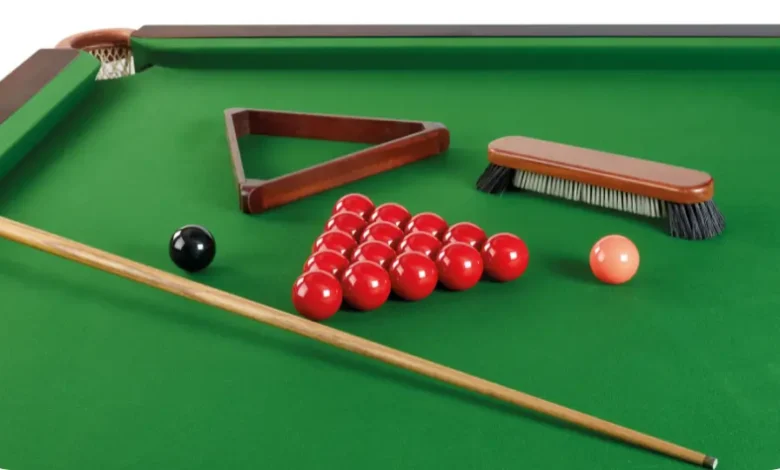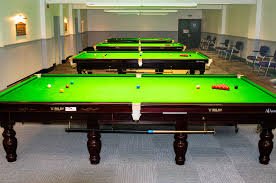Introduction: What Is Snooker Really About?

Snooker is more than just a cue sport—it’s a game of immense precision, mental discipline, and finesse. Played on a large rectangular table with 21 colored balls and a cue ball, snooker has captivated fans across the globe with its strategic depth and the sheer artistry of top players. It’s not just about pocketing balls; it’s about thinking five steps ahead, controlling the table, and seizing opportunities with calm under pressure.
At first glance, snooker might seem like a slower-paced cousin of pool or billiards, but once you understand the layers of strategy and skill involved, it becomes absolutely mesmerizing. Every shot is a story in itself. From the break-off to the final black, each frame is a psychological battle played out in slow motion.
Despite its British roots, s n o o k e r has expanded well beyond its traditional audience. Countries like China, India, Australia, and Pakistan now produce top-tier talent, and global audiences tune in religiously during big tournaments like the World Championship, the UK Championship, and the Masters.
The Origins and Evolution of s n o o k e r

The history of s n o o k e r is as intriguing as the game itself. It traces its roots back to the late 19th century when British Army officers stationed in India began experimenting with various cue sports. The most popular theory suggests that snooker was invented in 1875 by Sir Neville Chamberlain (no, not the British Prime Minister), who came up with the rules while stationed in Jabalpur, India.
The term “s n o o k e r” was originally military slang for a first-year cadet or someone inexperienced. The name stuck, and before long, it became synonymous with the game we know today. Over time, the game gained structure, and official rules were drafted. The first professional championship took place in 1927, and from then on, snooker began its journey from clubs to the international stage.
In the 1980s, snooker experienced a massive boom in popularity, especially in the UK, thanks to the advent of color television. Matches were no longer just for pub-goers and die-hard fans—they became primetime events. Players like Steve Davis, Jimmy White, and later Ronnie O’Sullivan turned snooker into a cultural phenomenon, drawing millions of viewers and inspiring new generations of cueists.
How the Game Works: Rules, Setup, and Scoring
Snooker might look complex at first, but once you get the hang of the basics, it becomes incredibly engaging. A standard snooker table is 12 feet by 6 feet, significantly larger than a pool table. It features six pockets—one in each corner and two in the middle of the longer side rails.
The game is played with 22 balls: 15 reds, six colors (yellow, green, brown, blue, pink, and black), and one white cue ball. The objective is to score more points than your opponent by potting balls in a specific order. Players must first pot a red (1 point), followed by a color (points range from 2 to 7 depending on the color), and then alternate in this manner.
Once all reds are potted, the remaining colors must be cleared in a fixed sequence: yellow (2), green (3), brown (4), blue (5), pink (6), and black (7). Fouls can cost you points and may include missing a shot, potting the wrong ball, or failing to hit any ball.
The highest possible break is 147, which involves potting all 15 reds with 15 blacks followed by all six colors in order. Achieving a 147 is rare and celebrated like a hole-in-one in golf—it’s the holy grail for any professional.
Why Snooker Is a Game of the Mind
Snooker isn’t just about potting balls; it’s about controlling the white cue ball, planning positional play, and outwitting your opponent. Unlike pool, where games can be over in minutes, snooker rewards patience and deep concentration. It’s a slow burn, with players sometimes taking several minutes to consider a single shot.
What makes it even more fascinating is the psychological warfare. Players often use safety shots to leave their opponent in a tricky position. These defensive plays can be just as thrilling as offensive breaks. A single miscalculation can turn the tide of an entire frame—or even a match.
Mental strength is everything in snooker. Top players often spend years honing their focus, resilience, and emotional control. It’s not uncommon for a match to last several hours or even days during tournaments, so staying composed under intense pressure is crucial.
The Legends of the Game and Modern Icons
Any conversation about snooker legends has to begin with Stephen Hendry, the Scottish maestro who dominated the 1990s. His clinical, attacking style and seven world titles set the benchmark for modern snooker.
Then there’s Ronnie O’Sullivan, often dubbed “The Rocket.” He’s widely considered the most naturally gifted player to ever pick up a cue. With six world titles (as of this writing), countless records, and a flair for the dramatic, Ronnie has brought rockstar charisma to the sport. His lightning-fast 147 in just over five minutes still stands as a breathtaking moment in sports history.
Other names like John Higgins, Mark Williams, Steve Davis, Jimmy White, and more recently Judd Trump and Luca Brecel have left their own marks. These players have contributed to the sport’s popularity and continue to elevate the game to new heights with each season.
Snooker Today: Global Popularity and the Rise of New Talent
Snooker is no longer just a British pastime. It’s grown into a truly international sport. In recent years, China has emerged as a powerhouse with players like Ding Junhui, Zhou Yuelong, and Yan Bingtao making waves on the pro circuit. Chinese tournaments draw huge crowds and bring valuable sponsorship and media attention.
Pakistan, Thailand, and India are also making significant contributions. In fact, Pakistan’s Mohammad Asif and India’s Pankaj Advani have won several amateur world championships, helping to further globalize the sport.
The World Snooker Tour now features events in Europe, Asia, and the Middle East. The ranking system ensures that fresh talent always has a chance to break through, making for an exciting mix of veterans and up-and-comers. Watching a teenager take down a seasoned pro is one of the many thrills of modern snooker.
Why You Should Start Playing or Watching Snooker
Even if you’ve never held a cue stick, snooker is incredibly rewarding—whether as a viewer or a casual player. For those who enjoy strategy games, it’s a dream come true. Every match is like a chessboard of possibilities, and you’ll often find yourself predicting the next move, admiring a perfectly executed safety, or holding your breath during a tricky pot.
Playing snooker also sharpens your hand-eye coordination, improves your focus, and teaches you patience. Unlike many fast-paced sports, snooker invites you to slow down and think. It’s therapeutic in its own way.
Snooker clubs and lounges are also fantastic social spaces. Whether you’re playing with friends or practicing solo, it’s a relaxing way to spend a few hours. Plus, learning the game gives you a deeper appreciation for what professionals achieve on the world stage.
Conclusion: The Beauty of Snooker Lies in Its Depth
Snooker is not just a game—it’s a discipline, an art, and for many, a lifelong passion. Its blend of skill, psychology, and elegance makes it one of the most intellectually stimulating sports out there. Whether you’re a die-hard fan, a weekend player, or someone just getting curious, snooker has something to offer.
So next time you see a snooker table, don’t walk past it. Pick up a cue, line up a shot, and begin your journey into one of the most beautiful sports in the world. Because once snooker hooks you, it’s hard to let go.



